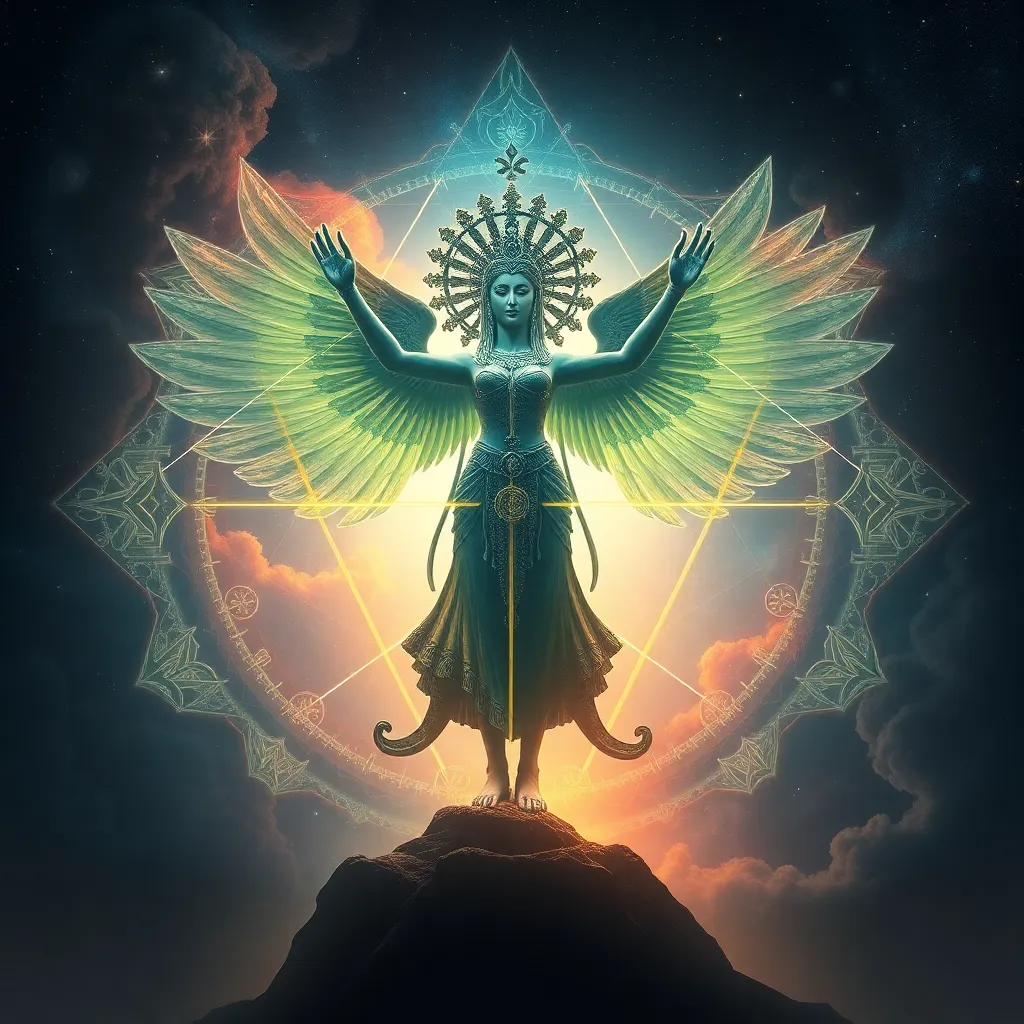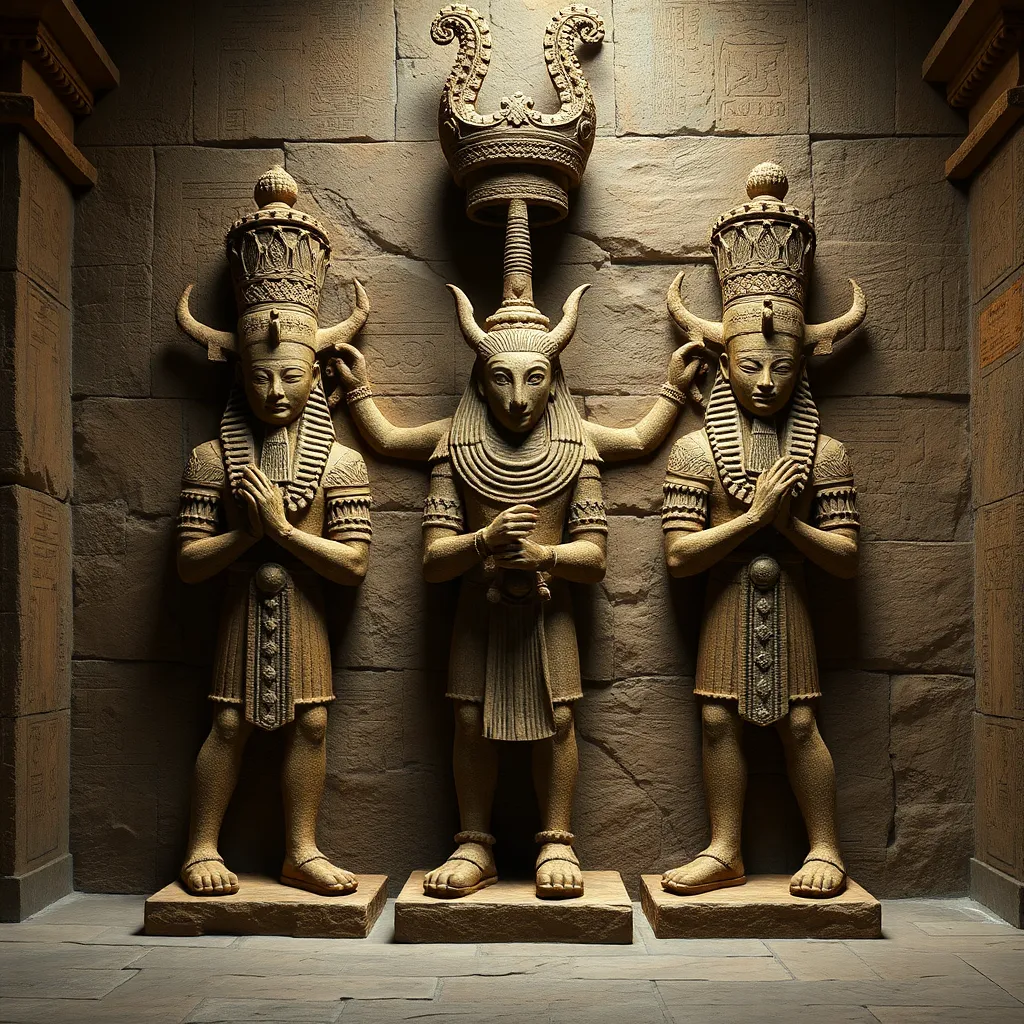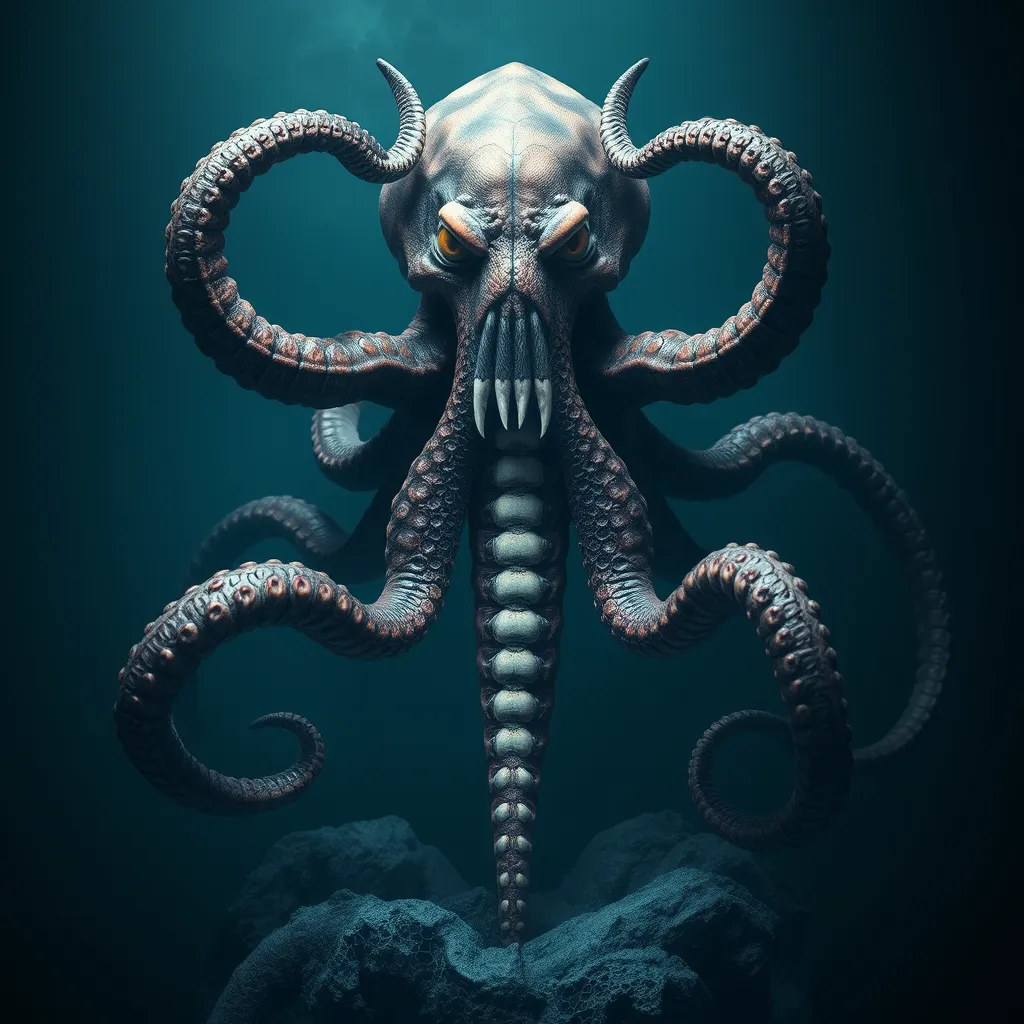Coatlicue and the Four Directions: Exploring the Goddess’s Connection to the Cosmic Axis
I. Introduction
Coatlicue, a prominent figure in Aztec mythology, is revered as the mother of gods and the embodiment of life, death, and rebirth. Her complex character reflects the dualities present in nature and human existence. In Mesoamerican cosmology, the concept of the Four Directions plays a pivotal role in understanding the universe’s structure and dynamics. This article aims to explore how Coatlicue is intricately connected to the cosmic axis through her representation in Aztec beliefs and practices.
II. The Mythological Background of Coatlicue
Coatlicue, often depicted as a fierce and formidable goddess, is known as the “Serpent Skirt” due to her snake-covered body. Her origins trace back to the creation myths of the Aztec civilization, where she is described as the mother of several important deities, including Huitzilopochtli, the god of war, and Coyolxauhqui, the moon goddess.
As a mother goddess, Coatlicue embodies both nurturing and destructive aspects. She is a deity of life, representing fertility and motherhood, while also being associated with death, as she is the one who receives the souls of the deceased. This duality is reflected in her iconography, where she is often shown with a necklace of human hearts and skulls, symbolizing her connection to both the life force and mortality.
III. The Significance of the Four Directions
In Aztec culture, the Four Directions—North, South, East, and West—are imbued with deep symbolic meanings. Each direction corresponds to specific elements, deities, and qualities:
- North: Associated with the earth, cold, and the deity Tezcatlipoca.
- South: Linked to fire, warmth, and the god Huitzilopochtli.
- East: Represents the dawn, life, and the deity Quetzalcoatl.
- West: Symbolizes the night, death, and the goddess Coatlicue.
The Four Directions are not merely geographical; they represent a holistic understanding of the universe, integrating various forces and energies. This directional symbolism is essential in Mesoamerican cosmology, as it reflects the balance of opposing forces and the cyclical nature of existence.
IV. Coatlicue and the Cosmic Axis
The cosmic axis, known as the “World Tree” or “Axis Mundi,” is a concept prevalent in many Mesoamerican belief systems. It represents the connection between the heavens, the earth, and the underworld, serving as a bridge that facilitates the flow of energies between these realms.
Coatlicue embodies the cosmic axis through her role as a mother of gods and her association with life and death. She is seen as a central figure in this cosmic balance, representing the cyclical nature of existence. Her mythology emphasizes the interplay between life, death, and rebirth, reinforcing the idea that these elements are interconnected rather than opposing.
V. The Intersection of Feminine Power and Cosmic Forces
Coatlicue stands as a powerful representation of feminine strength within the Aztec pantheon. Her narratives highlight the balance of creation and destruction, showcasing how feminine energy can influence cosmic forces. This duality is crucial in understanding the role of women in Aztec cosmology and spirituality.
Women were often seen as life-givers and nurturers, yet they also held the power of destruction, akin to Coatlicue’s fierce nature. This balance is reflected in various myths where her actions lead to the creation of new life or the destruction of the old, emphasizing the importance of feminine power in maintaining the universe’s equilibrium.
VI. Rituals and Practices Associated with Coatlicue
Rituals honoring Coatlicue and the Four Directions were integral to Aztec religious practices. Ceremonies often involved offerings of food, flowers, and even sacrifices to appease the goddess and ensure fertility and prosperity.
The significance of offerings was paramount, as they were believed to sustain the gods and maintain the cosmic balance. Contemporary interpretations of these rituals among descendants often focus on honoring the earth and its cycles, recognizing the enduring legacy of Coatlicue in modern spirituality.
VII. Coatlicue’s Influence in Modern Spirituality and Culture
Coatlicue’s representation in art and literature has evolved over time, reflecting her enduring significance in contemporary culture. Many artists and writers draw upon her imagery and symbolism to explore themes of identity, resilience, and the connection to indigenous heritage.
In recent years, there has been a resurgence of interest in indigenous spirituality, with Coatlicue emerging as a powerful symbol of cultural identity and resistance against colonial narratives. Her story serves as a reminder of the importance of honoring ancient deities and the wisdom they impart.
VIII. Conclusion
Coatlicue’s connection to the Four Directions and the cosmic axis highlights the intricate relationship between life, death, and the universe in Aztec mythology. Her duality as a mother goddess encapsulates the balance of creation and destruction, making her a central figure in understanding Mesoamerican cosmology.
The ongoing relevance of her mythology in today’s world serves as a testament to the importance of ancient deities in contemporary society. By recognizing and honoring such figures, we can gain a deeper appreciation for our cultural heritage and the wisdom embedded within it.



